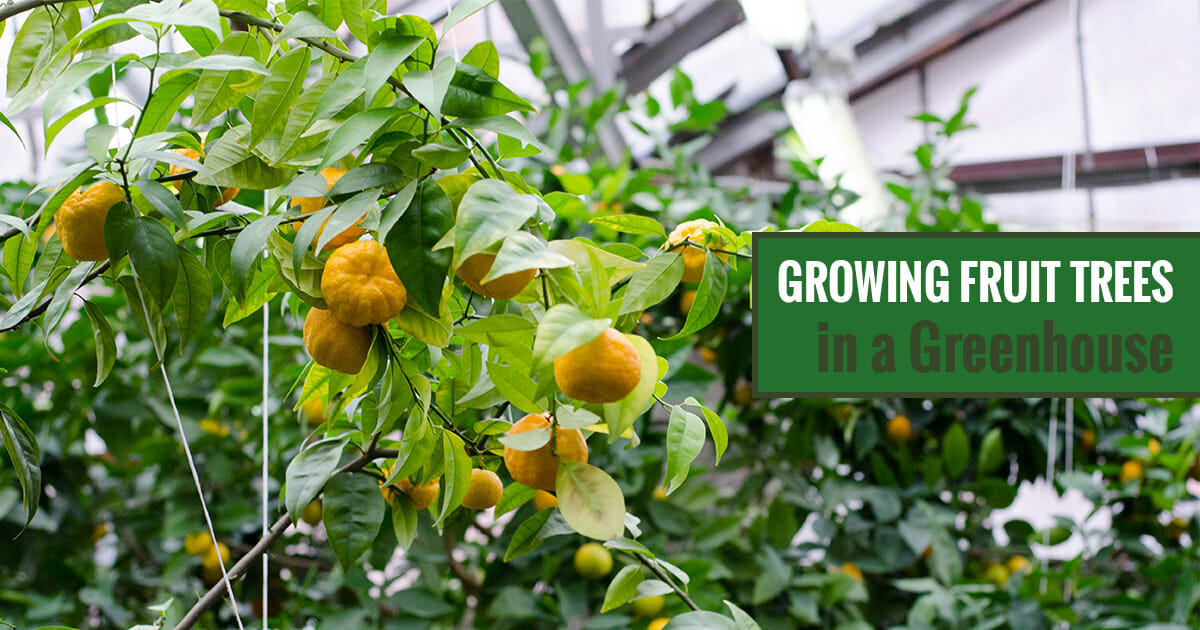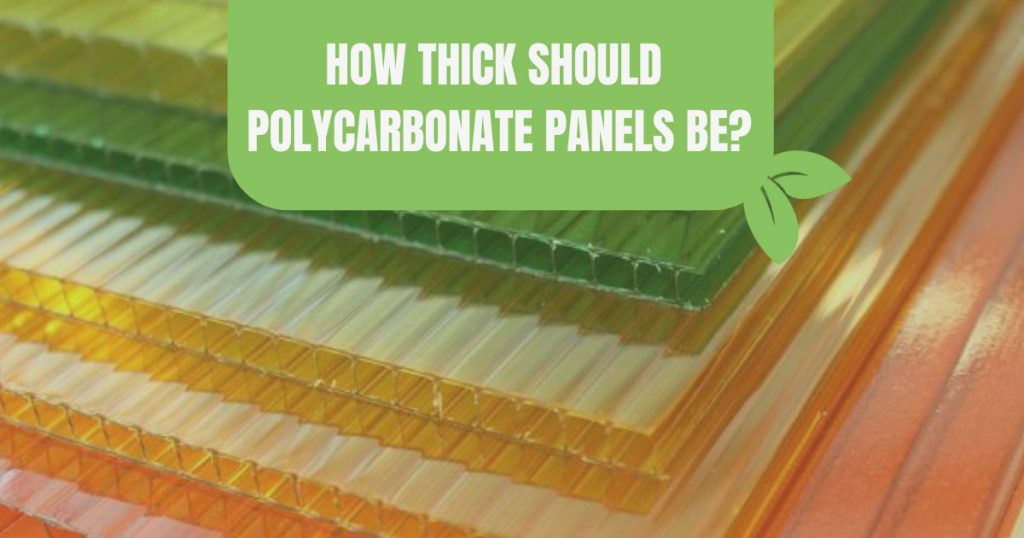


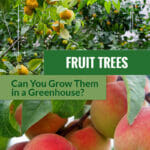
Oranges in Minnesota, lemons in Washington, guava in Michigan, or pomegranate in Maine? A greenhouse can provide you with these tropical fruits anywhere!
So, can you grow fruit trees in a greenhouse? Yes, you can. You can cultivate almost any plant from any climate zone in your greenhouse. To do this, you have to imitate the conditions of the native location as much as possible.
Fruit tree cultivation in a greenhouse is not as common as you would think. Your local climate may limit you to grow these outdoors. But with a greenhouse, you can eat and harvest your very own exotic fruits.
The general environment in a greenhouse is much better for planting certain fruit trees. Depending on the type of fruit, various conditions must or should be met so that the tree flowers and bears fruits. This requires a controlled environment and some level of commitment.
Which fruit trees are suitable for growing in a greenhouse?
Although the care of fruit trees in a greenhouse is similar to those planted outdoors, it is necessary to take into account some particularities.
For starters, it is not possible to plant all species in a greenhouse. Whether due to size or other needs, there are fruit trees more suitable for greenhouse cultivation and others that don’t do well.
In the table below, we give you a few fruit tree examples that you can grow in a greenhouse. We will go into more details thereafter to explain what limitations there are for some species.
| Easy To Grow | With Limitations | Not Suitable |
|---|---|---|
| Citrus (lemon, orange, lime, grapefruit, pomelo…) | Apple | Coconut |
| Fig | Cherry | Walnut |
| Guava | Peach | Pecan |
| Carambola | Nectarine | |
| Pomegranate | Pear | |
| Banana | Apricots | |
| Mango | Rambutan | |
| Papaya | Jackfruit | |
| Lychee | ||
| Avocado | ||
| Olive | ||
| Almond |
Easy to grow fruit trees for greenhouses: Tropical and subtropical fruits
Anything coming from Mediterranean, subtropical, and tropical climates will do fine in greenhouses unless it exceeds a certain height or width (depending on your greenhouse).
Back in the days, orangeries were the most typical greenhouses and they all grew lemons and oranges in them. This doesn’t have to limit you to citrus trees, though. Pomegranate and avocado can grow just as well.
So, if you haven’t seen your favorite tropical fruit on the list, you just need to research the average height of it. You can also search for dwarf varieties. Sometimes this will be your best bet or you have to regularly trim the trees.
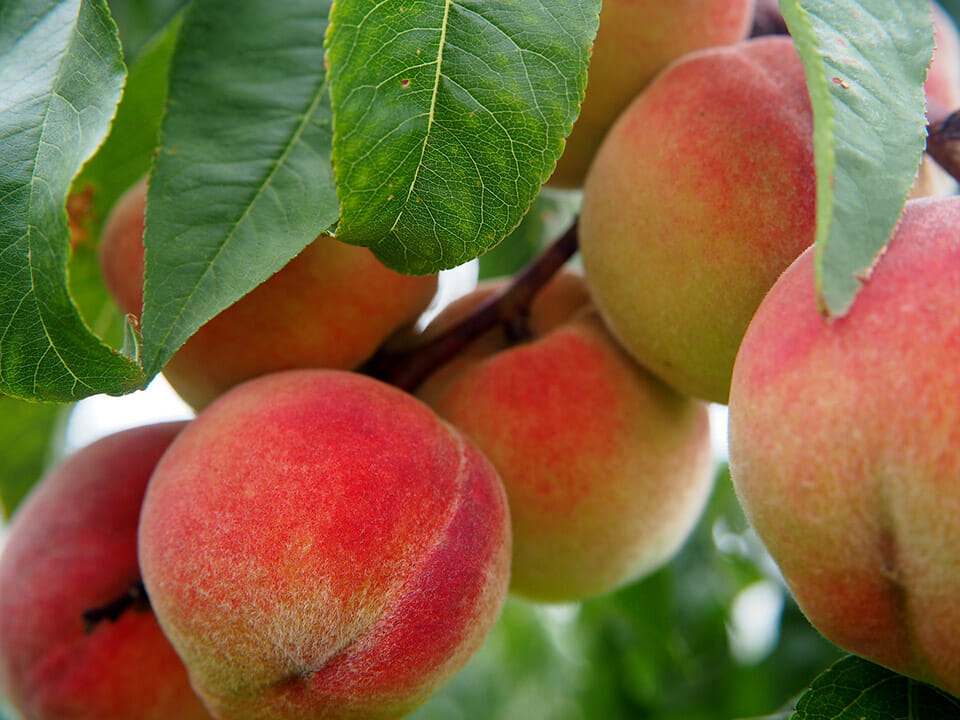
Fruit trees that can grow in a greenhouse but with limitations
Some fruit trees need a winter’s chill in order to develop flowers and fruits. They go through a certain cycle and a warm greenhouse will not provide this to them.
If you really want to grow these indoors, you have to use a cold greenhouse or transport them outside during the cold season.
In case you pick the latter, you have to grow the fruit trees in large pots. Moving these huge pots is not an easy task, though. You can get a Potwheelz Dolly. They will make this job easier! In addition, you’ll need a large door to fit the tree through.
Why would you even bother growing them in a greenhouse?
After all, they need the cold, so what’s the point? This is a valid point and in most cases these fruit trees will be just fine in your garden. Here are some examples when you want to grow them in the greenhouse:
- Maybe it gets too cold in your area for some of these varieties.
- You want fruits earlier which are easily achievable in a greenhouse.
- Fruits tend to grow in a higher number and larger.
- Maybe you want to protect your cherries and other fruits from those mean birds that pick all of them away.
Tips for growing fruit trees in a greenhouse
In order to succeed with growing fruit trees in your greenhouse, you should go through these tips!
The size of the greenhouse
No matter what fruit tree you’re going to pick, you’ll need a large greenhouse with a high ceiling. An 8×8 with 7.5ft at its peak will not suffice.
You want to be able to grow more than just a tree and you need to reach those plants. In some cases, you may even need two trees for pollination.
I would go as tall and large as your budget allows. The minimum height should be about 9ft in the center. This way you have some room for growth.
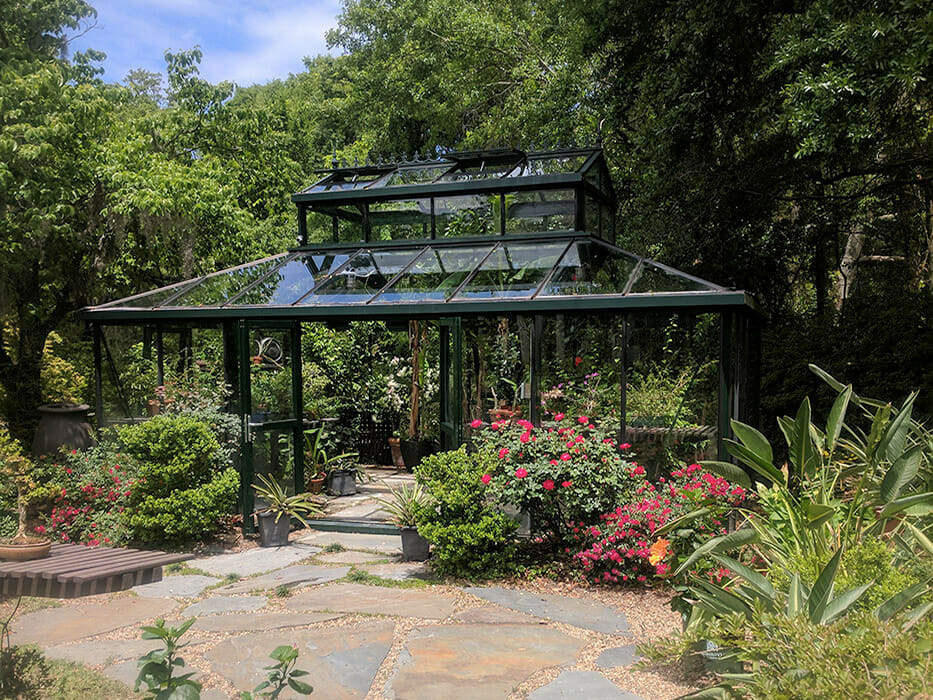
Picking suitable fruit trees
Before you run into the store, you should think about the overall plan for your greenhouse. The plants you choose have to harmonize. It’s not possible to achieve 2-3 different climates.
If you grow tropical plants, you should stick to those and not mix it with temperate plants. Unless you only start the seedlings and transplant them outdoors. Then you’ll be fine.
Pollination
Producing fruits doesn’t work without pollination. There are some fruit trees that are self-pollinating and others that need insects or wind, or even cross-pollination.
This means you either have to attract beneficial insects into your greenhouse or practice manual pollination. For fruit trees that require cross-pollination you will need at least 2 trees (e.g. apples, pears).
Pots vs. in-ground
99% of the people will plant them in pots in a greenhouse so they can move them around. The tree will bear less fruit than if it were in the ground since it will have fewer branches. This doesn’t affect the size of its fruit, though.
The problem with trees that are grown in the ground inside a greenhouse is the flexibility. Maybe you want to re-organize your shelves and beds after a few years and the tree would do better in a different corner. This is almost impossible or much more work if it’s planted in the ground.
Another problem will be weeds. The depth of the roots will make it impossible to install a complete layer of weed protection. You have to leave a hole for the tree. This provides an opening for weeds to start spreading.
Tips for growing fruit trees in containers
If you choose to grow your trees in pots, we have some tips for you.
The choice of pot
The dimensions of the container will depend on the root system of the chosen fruit tree.
Fruit trees with tracer roots deplete the soil of water and nutrients around the surface. It is therefore best to make use of a pot that is wider than deep.
Fruit trees with tap roots will look for their needs deep in the soil: they need a pot much deeper than wide. You may have to plant these in the ground after a few years.
Fruit trees that develop a strong and deep rooting should be potted in a big container. Remember that the wider and deeper the pot, the more space the roots will have to grow strongly.
It is advisable to choose clay pots since the thin plastic ones can crack easily. Also, it is preferable to use a stronger/heavier material to ensure the tree’s stability when it gains height.
If you are planting a young fruit tree, start with a pot of at least 16 inches in all directions. You will need to re-pot after a couple of years if you start with the smallest suggested size. If you pick a larger one right away (20+ inches), you may not need repotting for the first 5 years.
Soil and compost
Always use high-quality soil that is high in nutrients and not contaminated with pests.
Choose a mixture of leaf compost (3/4) and topsoil (or garden soil). This substrate depletes after several years, becoming devoid of any nutrient. The fertilizers are thus the only nutrients nourishing the fruit tree!
Fertilizing
For fertilization, the best options are compost and earthworm humus. This can be easily made from your own kitchen and garden scraps.
Watering
Irrigation is another central point in the care of any plant. One downside to growing in pots is the need for frequent watering. The soil dries out much faster than the soil in the ground.
In open ground, the roots can fetch water deeper in the soil, but this is not the case in pots. This causes the plants in pots to dehydrate more easily.
Fruit trees like cool soils during their growing season. It is advisable to install a drip irrigation system if you are unable to do it manually. This will prevent them from undergoing even temporary droughts. Temporary droughts can slow down or even stop their growth.
Each fruit tree has its own water requirement, take note of this while setting the timer and drip gauge of your drip system.
Water when the top 1-2 inches of soil is dry and pour water until it drains from the bottom of the container. As plants develop more extensive roots, they can be watered less frequently.
Another important aspect is the type of water. The most suitable for fruit trees is rainwater or water without lime.
Repotting & exchanging the soil
In order to provide the best nutrients to your plant, you need to change the soil every year or two.
If your subject is still young, increase the pot’s diameter with each repotting: generally 1 inch per year.
After a while, repotting will become more difficult because of the weight and the size of the pot. Then you can stick to only changing the surface. This involves replacing the first 2 inches of soil with rich soil ( manure soil, compost with new soil…).
Every 4 to 5 years, you still have to take the tree out of its pot and replace part of the soil. If necessary, take advantage of this cumbersome operation to trim part of the roots.
Trimming roots
This operation is only carried out on subjects who have reached their maturity. Take the root ball out of the pot.
Cut part of the root with pruning shears for the fine roots and use a saw for larger ones.
Make sure you disinfect any cutting tool you use.
Pick an area that is about 1/4 – 1/3 of the root ball and remove 2-4 inches of the roots. Do not repeat the operation for another two years on another area of the root ball.
Take advantage of this new “space-saving” to add new and rich substrate to the bottom of the pot.
Temperature
You have more control over the environmental conditions of a greenhouse. You can control the temperature (to an extent) depending on the type of fruit tree you have.
Fruits like citrus cannot withstand the cold. Potted plants are more sensitive to cold and less hardy than if they were grown in the ground. In a pot, the soil no longer plays its role as an insulator. This exposes the strain and roots to strong variations in temperature.
Invest in a gas/electric heater to extend your growing season through the winter months. Or an evaporative cooler to extend the growing season past the summer months.
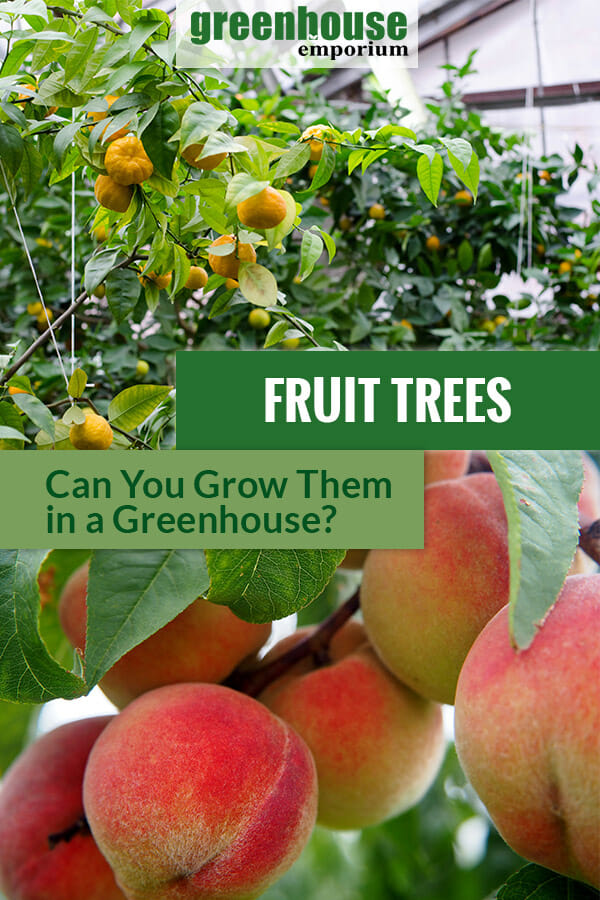
Taking care of your fruit tree
It’s time to take care of your fruit trees! Although fruit trees usually require little attention. If you attend to your tree’s needs, you will have a tastier and more abundant harvest.
Pruning and trimming of fruit trees
After losing all the leaves (winter), the fruit trees go into a vegetative standstill. This is a period in which the tree comes to rest. This allows you to carry out delicate work (such as pruning) on the tree without damaging it.
Pruning of fruit trees can be done from the first year. You have to do this little by little till they become vigorous and well-developed trees.
Pruning helps to control the growth of these species ensuring good fruit development. You should use suitable sharp and clean tools so that the pruning affects the fruit tree as little as possible. This way, you will avoid the spread of fungi through the cut areas, and the tree will suffer less.
After a few years, your trees may grow taller and taller. This is when you want to start trimming the top. Otherwise, they may break through the roof of your greenhouse. And this is something you definitely want to avoid!
Protection from unsuitable temperatures & pests
While you can easily protect your fruit trees from threads, you should still maintain a certain temperature and watch out for pests.
As mentioned before, using a gas or electric heater can be a good way to combat frost. In summer, you may need to add a bit of protection from the sun and heat.
There is still a chance that you purchase plants, soil, or tools that are infested with some pests or diseases. Even some beneficial insects could carry them into your greenhouse.
You should always watch out for any signs that are caused by fungi, aphids, mites, and other pests. Getting rid of them as quickly as possible will limit the spread in your greenhouse.
Choose a rich soil and fertilizer
As with those planted outdoors, potted or in-ground fruit trees demand rich and fertile soil. All fruit trees feed on many minerals and nutrients to develop delicious fruits.
That’s why they need very rich and fertile soil. Adding fertilizers will be a regular task for you.
It is best to use natural fertilizers such as earthworm humus, guano, or compost. You have to be careful with fertilizers, though. As natural as they may be, they can damage our tree roots if we use them in excess.
The choice and amount of fertilizer depends on the type of fruit tree and also on the type of soil. It is advisable to do a little soil testing before adding fertilizers.

